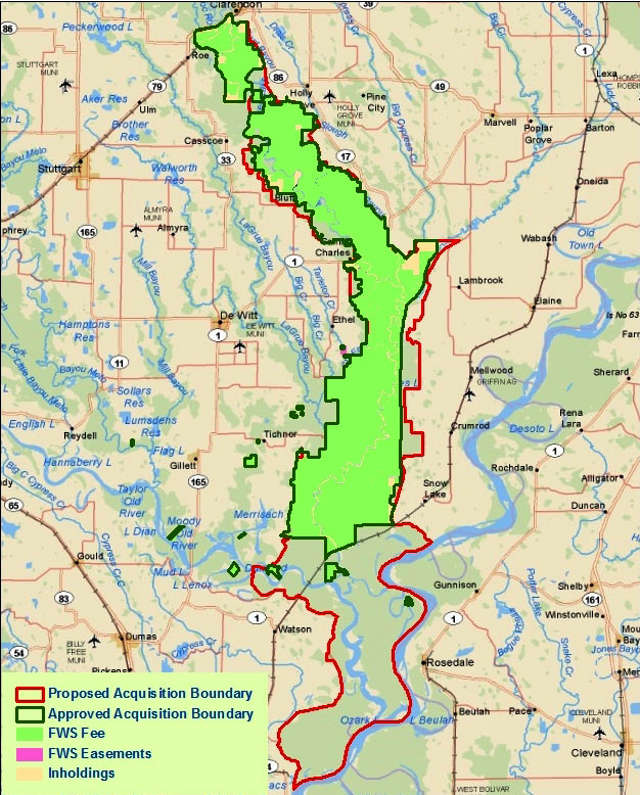Dale Bumpers White River National Wildlife Refuge

Ducks on the floodwaters in the swamp

Champion Cypress Tree
Dale Bumpers White River National Wildlife Refuge is a 160,756-acre property along the White River in eastern Arkansas. This is in the area of the Mississippi River Alluvial Plain, an area with significant acreages of bottomland hardwood forest, meandering sloughs, oxbow lakes, former croplands and massive numbers of migratory waterfowl, wading birds and shorebirds. To the north is Cache River National Wildlife Refuge.
White River National Wildlife Refuge was established in 1935 to protect habitat critical to migratory waterfowl. The refuge is used by the largest concentration of wintering mallard ducks in North America. There are also massive numbers of Canada and snow geese on the property in the winter. The name of the NWR was changed to Dale Bumpers White River National Wildlife Refuge to honor Arkansas Senator Dale Bumpers.
The property consists of about 154,000 acres of bottomland hardwood forest, 4,000 acres of open water (both natural and man-made lakes), 1,000 acres of grassland and about 900 acres of croplands. The US Fish & Wildlife Service proposed expanding the refuge in 2013 to a total of 297,806 acres. That would add 26 miles of the Arkansas River, 9 miles of the White River floodplain and 34 miles of the west bank of the Mississippi River to the Ramsar designated "Wetland of International Importance."
The Dale Bumpers White River NWR visitor center is open Mondays through Fridays from 8 am to 4 pm and Saturdays from 9 am to 5 pm, except closed on Federal holidays. There is no fee to visit White River NWR but there are user fees for hunting, fishing, camping and ATV use. All motorized vehicles must stay on established roadways and parking areas. ATVs are allowed only for hunting and fishing purposes and are restricted to those roads and trails so-designated. Camping is restricted to those people engaged in wildlife-dependent activities (hunting and fishing) only. When you pay for the user permit, get the brochure: camping dates and availability change with seasons and water flows. There are two established trails open year round on the refuge, both accessed from the visitor center area. Most other established trails (and there are hundreds of miles of them) are only open from March 1 to November 1. The Champion Cypress Tree Trail (to the largest tree in Arkansas) is open from March 1 to December 15.

Looks like high water

Photos and map courtesy of the US Fish & Wildlife Service